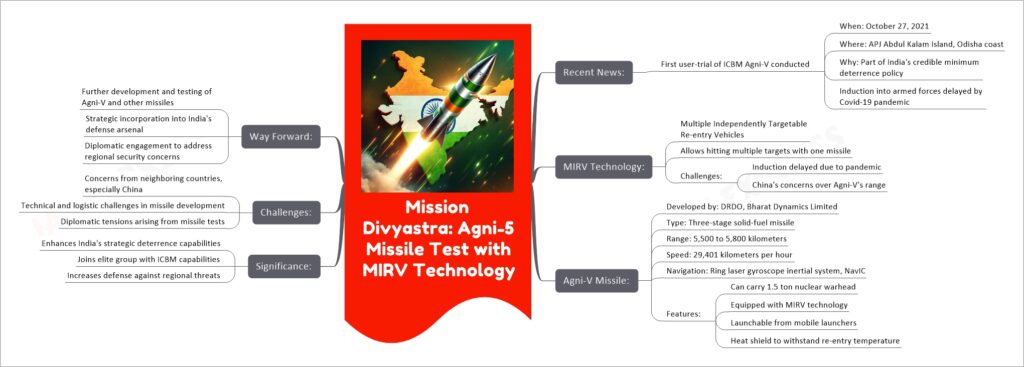Mission Divyastra: Agni-5 Missile Test with MIRV Technology

The recent test of the Agni-5 missile, dubbed Mission Divyastra, is a significant advancement for India’s defense capabilities. It represents the first user-trial of the intercontinental ballistic missile (ICBM) Agni-V, successfully conducted from APJ Abdul Kalam Island off the Odisha coast. This test is a crucial step toward the likely early induction of the system into the Indian armed forces, a process that was delayed due to the Covid-19 pandemic. The missile is equipped with Multiple Independently Targetable Re-entry Vehicle (MIRV) technology, allowing it to hit multiple targets with a single launch, making it more challenging to intercept than conventional missiles. With a range of 5,500 to 5,800 kilometers and capable of traveling at speeds 24 times faster than the speed of sound, Agni-V enhances India’s strategic deterrence capabilities and places the country among a select group of nations with advanced ICBM capabilities .
If you like this post, please share your feedback in the comments section below so that we will upload more posts like this.

